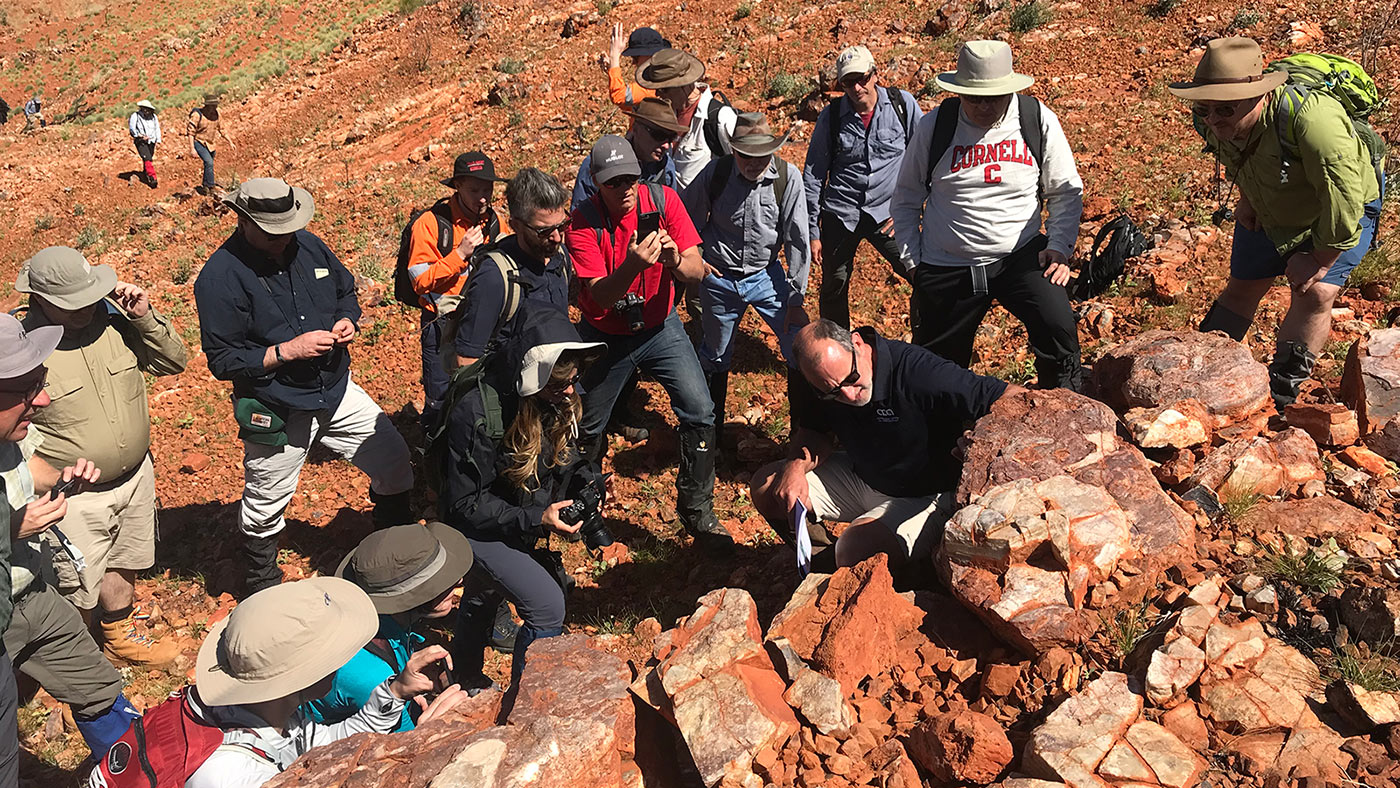
One of the biggest ambitions of upcoming missions to Mars is to look for evidence of ancient life on the planet. Both NASA’s Mars 2020 and the European Space Agency (ESA)’s ExoMars rovers will use drills, corers, and other equipment to collect and analyze samples of Martian rock to learn about the history of the planet. But in order to identify potential fossils of microbial life in these rocks, the rovers will need to know what to look for – so scientists have undertaken a study mission to the Australian Outback.
In the Pilbara region of northwestern Australia, you can find fossils of microbes in structures called stromatolites which formed billions of years years ago. Stromatolites are layers of rock which are formed when simple microbes called mats grew in water.
“Some 3.48 billion years ago, this area was home to a caldera, or collapsed volcano, filled with hot, bubbling seawater,” Martin Van Kranendonk, director of the Australian Centre for Astrobiology at the University of New South Wales, explained in a statement. “At the same time, this location was also home to structures called microbial mats — visible to the naked eye but composed of microscopic organisms. Today you would know them as simple pond scum, but back then they were the most complex lifeforms on Earth.”
The scientists were able to study stromatolites in Pilbara to learn what sorts of structures they should be looking for on Mars that could indicate the presence of life. “A stromatolite is quite subtle to the untrained eye,” Van Kranendonk said. “But once you know the details, you recognize that these wavy, wrinkly rocks have a structure different from that which can be explained by just geology.”
There are helpful similarities between the outback and the red planet. The area of Mars which the Mars 2020 rover will be exploring, the Jezero Crater, also had a body of water in it between 3 and 4 billion years ago. Scientists have recently discovered mineral deposits around the rim of the crater which help to form stromatolites. All the available data suggests it’s a key location where stromatolites are most likely to have formed.
The potential impact of finding evidence of life, even tiny and ancient life, on another planet can’t be overstated. “While we expect to find many significant rocks during both Mars 2020 and ExoMars missions, we also have to leave open the possibility we could find one or more very special rocks, the kind whose discovery would not only speak volumes about the history of Mars but contribute significantly to the discussion of life elsewhere in the universe,” said Ken Farley, Mars 2020 project scientist at Caltech in Pasadena.
Editors' Recommendations
- Look at what a NASA Mars orbiter spotted from 180 miles away
- How NASA’s Ingenuity helicopter shook off Martian dust to fly again
- NASA’s Mars sounds open up whole new world for scientists
- NASA’s Perseverance rover spots Mars’ teeny tiny moon, Deimos
- How engineers for NASA’s Ingenuity helicopter do tech support on another planet



